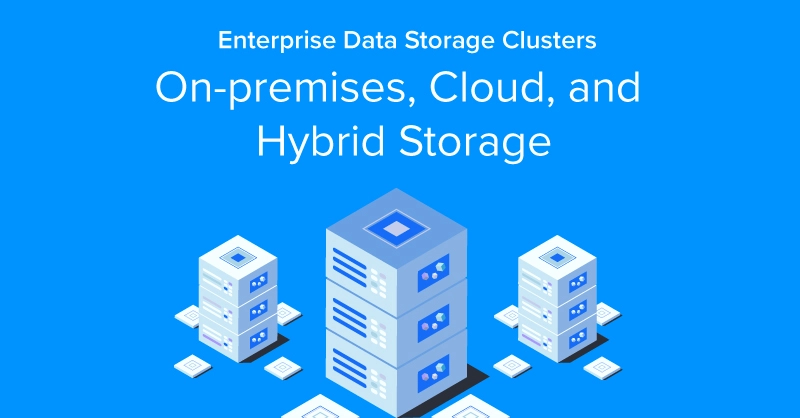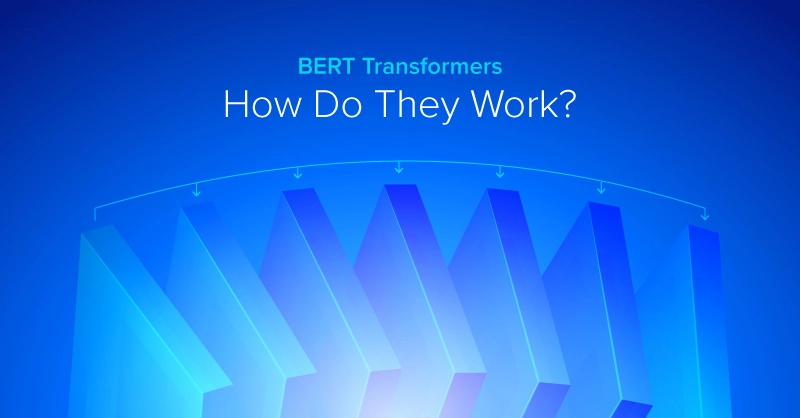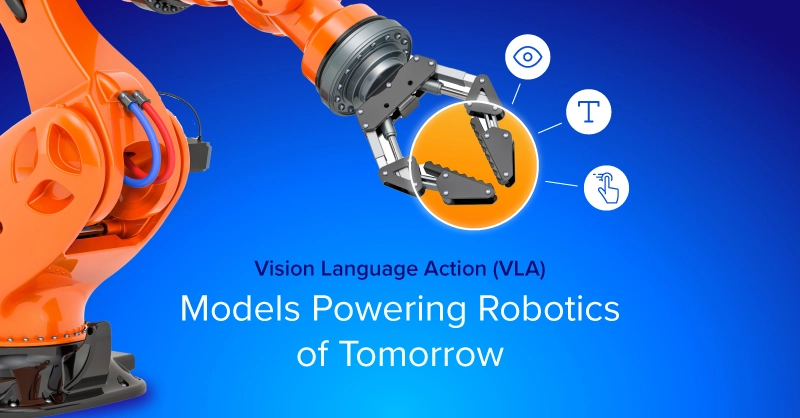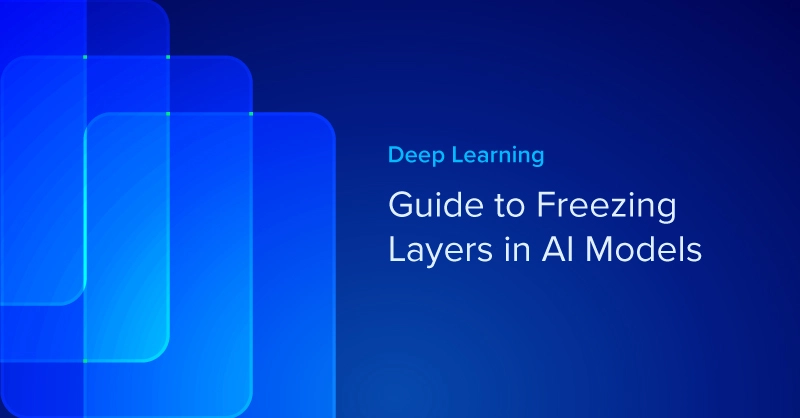
Introduction
Enterprise data storage forms the backbone of modern organizations, supporting critical applications, safeguarding data, and enabling seamless operations. As businesses generate and rely on vast amounts of information, choosing the right storage infrastructure becomes essential. From performance to scalability and cost-efficiency, the storage solution must align with specific workload demands and future growth plans.
Types of Storage Devices
The type of storage drive plays a crucial role in determining the performance, capacity, and cost of an enterprise data storage solution. Different drives serve unique purposes, and selecting the right one depends on the workload and data access patterns.
- Hard Disk Drives (HDDs) are the traditional workhorse for enterprise storage, offering high capacity at an affordable cost. They use rotational platters and mechanical read/write heads with a SATA interface. HDDs typically have slower access speeds compared to SSDs, but their low cost per TB and predictable lifespan make them easy to service and great for cold storage.
- Cold storage for infrequently accessed data.
- Archiving and backup solutions where cost-efficiency is key.
- Solid-State Drives (SSDs) have become the go-to solution for applications requiring high-speed performance and durability. SATA SSDs, while still prevalent, have been overshadowed by higher-performance NVMe SSDs that use a PCIe interface for even faster transfer speeds that scale with each generation. PCIe 5.0 SSDs can hit peak speeds of up to 14.5GB/s.
- High-performance computing (HPC) and AI/ML workloads.
- Real-time analytics and large-scale simulations.
Dense NVMe SSDs require ample PCIe lanes to function, requiring an appropriate processor with ample PCIe lanes to run. NVMe SSDs are best suited for frequent data access and data-intensive applications.
When choosing the type of storage in an on-premises or hybrid storage option, drive configuration and customization will affect overall performance. For cost efficiency and large-capacity storage, HDDs can be used for cold storage and infrequently accessed data.
On-premises | Cloud | Hybrid | |
Scalability | ⭐ | ⭐⭐⭐ | ⭐⭐ |
Cost | ⭐⭐ | ⭐⭐⭐ | ⭐⭐ |
Performance | ⭐⭐⭐ | ⭐ | ⭐⭐ |
On-Premises Storage
On-premises storage involves maintaining dedicated infrastructure within the organization. This option offers complete control over hardware, software, and security measures, making it ideal for sensitive data and high-performance workloads.
It requires a larger upfront investment and ongoing maintenance but provides predictable performance and reliability. On-premises storage has the lowest latency and fastest speed since there are less bottlenecks.
- Scalability:
- Limited by physical space and hardware upgrades via additional storage servers
- Scaling often requires planning and investment in supporting hardware like networking
- Cost:
- High upfront costs for hardware, installation, and maintenance.
- Hardware ownership requires ongoing operational costs such as power, and cooling lowering total cost of ownership in the long run.
- Requires a dedicated IT or sysadmin to run and configure your cluster.
- Performance:
- Provides low-latency, high-speed performance for local workloads
- Ideal for applications requiring real-time data processing
Cloud Storage
Cloud storage allows businesses to store and access data through third-party providers like AWS, Google Cloud, or Microsoft Azure. This deployment style offers unmatched scalability and flexibility, as businesses can easily adjust storage capacity based on their needs. With minimal upfront costs and global availability, cloud storage is an excellent choice for backup, disaster recovery, and remote collaboration.
However, it may introduce latency and recurring costs that add up over time. It also isn't the most flexible and you don't own your storage. There is a lack of local access to data thus outages can drastically affect productivity.
- Scalability:
- Unlimited scalability to accommodate growing data needs
- Capacity adjustments can be made instantly without physical infrastructure changes
- Cost:
- Minimal upfront costs with pay-as-you-go pricing models
- Ongoing operational expenses can balloon with increased data usage and transfer fees. More expensive in the long run for high-data-use workloads
- Performance:
- Dependent on internet speed and service provider infrastructure
- May introduce latency, especially for high-frequency data access
Hybrid Storage
A hybrid model combines on-premises infrastructure with cloud storage, giving organizations the best of both worlds. Businesses can keep critical workloads and sensitive data on-prem while leveraging the cloud for scalability and cost efficiency. a hybrid approach can benefit large enterprises managing diverse workloads or during seasonal data spikes.
Scalability:
- Scales locally for critical workloads while leveraging cloud storage for additional capacity.
- Flexibility to expand as needed without overhauling on-prem infrastructure.
Cost:
- Balances the upfront costs of on-prem with operational costs of cloud usage.
- Requires strategic planning to optimize costs based on workload distribution.
Performance:
- Offers high-speed local access for critical workloads.
- Cloud integration provides backup and disaster recovery but may introduce latency for cloud-based operations.
Key Takeaways
Exxact is prepared to deliver custom configurable storage clusters and storage nodes for your computing infrastructure. It is important to understand the differences between these deployments as well as their pros and cons. Here are some other considerations to take when deciding on a large-scale storage deployment for your organization.
- Scalability: Storage systems need to grow with your organization's data demands. Always plan for future capacity during initial deployment.
- Performance: Match the storage solution to your workload's IOPS, latency, and bandwidth requirements. High-performance systems are often worth the premium for critical workloads like AI, engineering simulation, life science research, and more.
- Cost Management: While upfront costs for on-premises storage can be high, operational expenses in the cloud can quickly surpass initial savings if not carefully monitored. On-premises has a high startup cost but low TCO (total cost of ownership), whereas cloud has a low startup cost but high TCO in the long run.
- Data Security and Compliance: Ensure your storage system aligns with regulatory requirements, especially if dealing with sensitive data. On-premises storage may offer better compliance control, while cloud providers often have robust security certifications.
By understanding these trade-offs and requirements, make an informed decision to align enterprise storage solutions with both current needs and future growth. If you have any questions on how your organization can increase data capacity through a hybrid or on-premises storage solution, contact Exxact today!
.png)
We're Here to Deliver the Tools to Power Your Research
With access to the highest performing hardware, at Exxact, we offer the storage and hardware platforms optimized for your deployment, budget, and desired performance.
Talk to an Engineer Today
Enterprise Data Storage Clusters - On-premises vs Cloud vs Hybrid Storage
Introduction
Enterprise data storage forms the backbone of modern organizations, supporting critical applications, safeguarding data, and enabling seamless operations. As businesses generate and rely on vast amounts of information, choosing the right storage infrastructure becomes essential. From performance to scalability and cost-efficiency, the storage solution must align with specific workload demands and future growth plans.
Types of Storage Devices
The type of storage drive plays a crucial role in determining the performance, capacity, and cost of an enterprise data storage solution. Different drives serve unique purposes, and selecting the right one depends on the workload and data access patterns.
- Hard Disk Drives (HDDs) are the traditional workhorse for enterprise storage, offering high capacity at an affordable cost. They use rotational platters and mechanical read/write heads with a SATA interface. HDDs typically have slower access speeds compared to SSDs, but their low cost per TB and predictable lifespan make them easy to service and great for cold storage.
- Cold storage for infrequently accessed data.
- Archiving and backup solutions where cost-efficiency is key.
- Solid-State Drives (SSDs) have become the go-to solution for applications requiring high-speed performance and durability. SATA SSDs, while still prevalent, have been overshadowed by higher-performance NVMe SSDs that use a PCIe interface for even faster transfer speeds that scale with each generation. PCIe 5.0 SSDs can hit peak speeds of up to 14.5GB/s.
- High-performance computing (HPC) and AI/ML workloads.
- Real-time analytics and large-scale simulations.
Dense NVMe SSDs require ample PCIe lanes to function, requiring an appropriate processor with ample PCIe lanes to run. NVMe SSDs are best suited for frequent data access and data-intensive applications.
When choosing the type of storage in an on-premises or hybrid storage option, drive configuration and customization will affect overall performance. For cost efficiency and large-capacity storage, HDDs can be used for cold storage and infrequently accessed data.
On-premises | Cloud | Hybrid | |
Scalability | ⭐ | ⭐⭐⭐ | ⭐⭐ |
Cost | ⭐⭐ | ⭐⭐⭐ | ⭐⭐ |
Performance | ⭐⭐⭐ | ⭐ | ⭐⭐ |
On-Premises Storage
On-premises storage involves maintaining dedicated infrastructure within the organization. This option offers complete control over hardware, software, and security measures, making it ideal for sensitive data and high-performance workloads.
It requires a larger upfront investment and ongoing maintenance but provides predictable performance and reliability. On-premises storage has the lowest latency and fastest speed since there are less bottlenecks.
- Scalability:
- Limited by physical space and hardware upgrades via additional storage servers
- Scaling often requires planning and investment in supporting hardware like networking
- Cost:
- High upfront costs for hardware, installation, and maintenance.
- Hardware ownership requires ongoing operational costs such as power, and cooling lowering total cost of ownership in the long run.
- Requires a dedicated IT or sysadmin to run and configure your cluster.
- Performance:
- Provides low-latency, high-speed performance for local workloads
- Ideal for applications requiring real-time data processing
Cloud Storage
Cloud storage allows businesses to store and access data through third-party providers like AWS, Google Cloud, or Microsoft Azure. This deployment style offers unmatched scalability and flexibility, as businesses can easily adjust storage capacity based on their needs. With minimal upfront costs and global availability, cloud storage is an excellent choice for backup, disaster recovery, and remote collaboration.
However, it may introduce latency and recurring costs that add up over time. It also isn't the most flexible and you don't own your storage. There is a lack of local access to data thus outages can drastically affect productivity.
- Scalability:
- Unlimited scalability to accommodate growing data needs
- Capacity adjustments can be made instantly without physical infrastructure changes
- Cost:
- Minimal upfront costs with pay-as-you-go pricing models
- Ongoing operational expenses can balloon with increased data usage and transfer fees. More expensive in the long run for high-data-use workloads
- Performance:
- Dependent on internet speed and service provider infrastructure
- May introduce latency, especially for high-frequency data access
Hybrid Storage
A hybrid model combines on-premises infrastructure with cloud storage, giving organizations the best of both worlds. Businesses can keep critical workloads and sensitive data on-prem while leveraging the cloud for scalability and cost efficiency. a hybrid approach can benefit large enterprises managing diverse workloads or during seasonal data spikes.
Scalability:
- Scales locally for critical workloads while leveraging cloud storage for additional capacity.
- Flexibility to expand as needed without overhauling on-prem infrastructure.
Cost:
- Balances the upfront costs of on-prem with operational costs of cloud usage.
- Requires strategic planning to optimize costs based on workload distribution.
Performance:
- Offers high-speed local access for critical workloads.
- Cloud integration provides backup and disaster recovery but may introduce latency for cloud-based operations.
Key Takeaways
Exxact is prepared to deliver custom configurable storage clusters and storage nodes for your computing infrastructure. It is important to understand the differences between these deployments as well as their pros and cons. Here are some other considerations to take when deciding on a large-scale storage deployment for your organization.
- Scalability: Storage systems need to grow with your organization's data demands. Always plan for future capacity during initial deployment.
- Performance: Match the storage solution to your workload's IOPS, latency, and bandwidth requirements. High-performance systems are often worth the premium for critical workloads like AI, engineering simulation, life science research, and more.
- Cost Management: While upfront costs for on-premises storage can be high, operational expenses in the cloud can quickly surpass initial savings if not carefully monitored. On-premises has a high startup cost but low TCO (total cost of ownership), whereas cloud has a low startup cost but high TCO in the long run.
- Data Security and Compliance: Ensure your storage system aligns with regulatory requirements, especially if dealing with sensitive data. On-premises storage may offer better compliance control, while cloud providers often have robust security certifications.
By understanding these trade-offs and requirements, make an informed decision to align enterprise storage solutions with both current needs and future growth. If you have any questions on how your organization can increase data capacity through a hybrid or on-premises storage solution, contact Exxact today!
.png)
We're Here to Deliver the Tools to Power Your Research
With access to the highest performing hardware, at Exxact, we offer the storage and hardware platforms optimized for your deployment, budget, and desired performance.
Talk to an Engineer Today

.jpg?format=webp)

